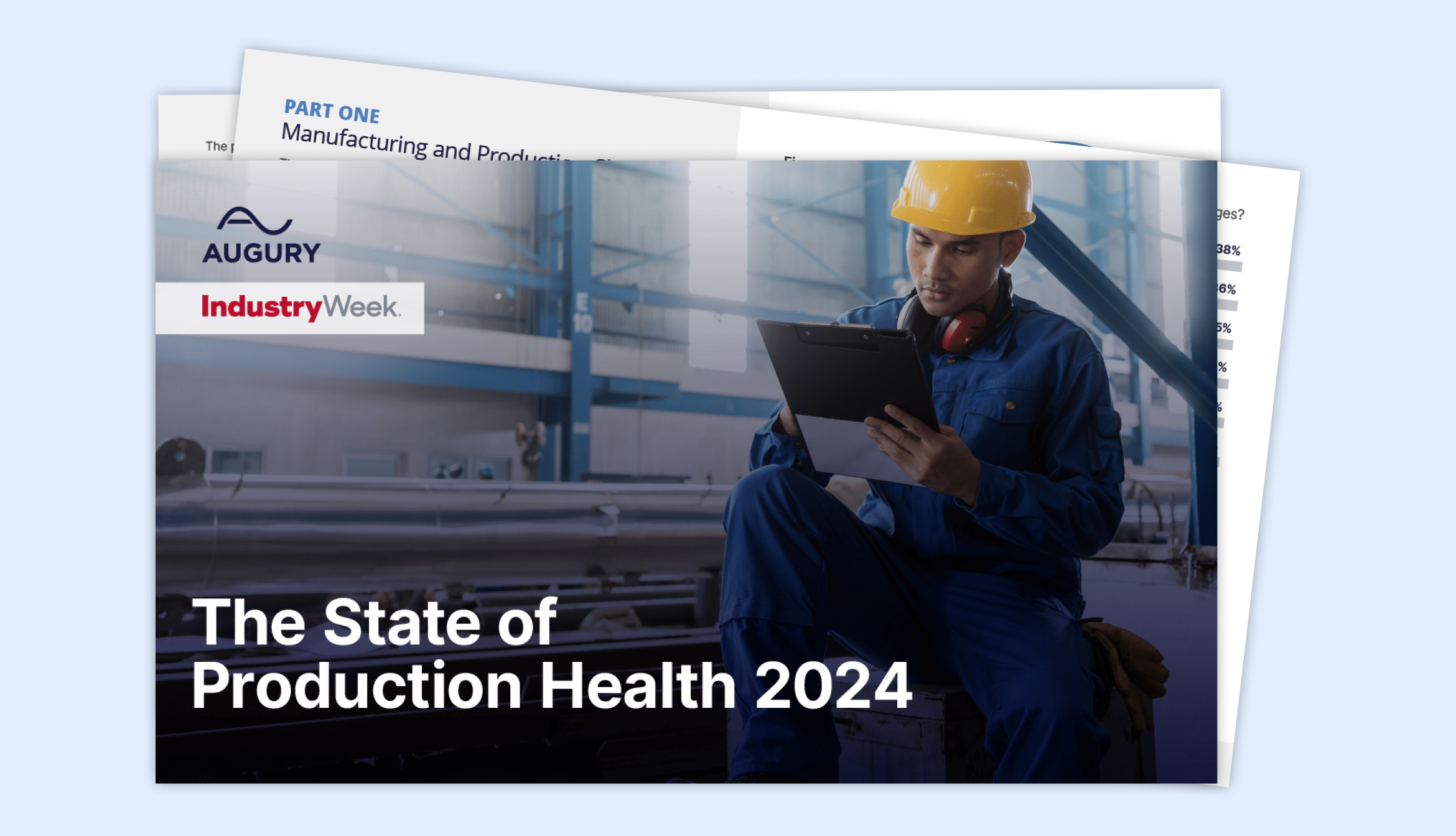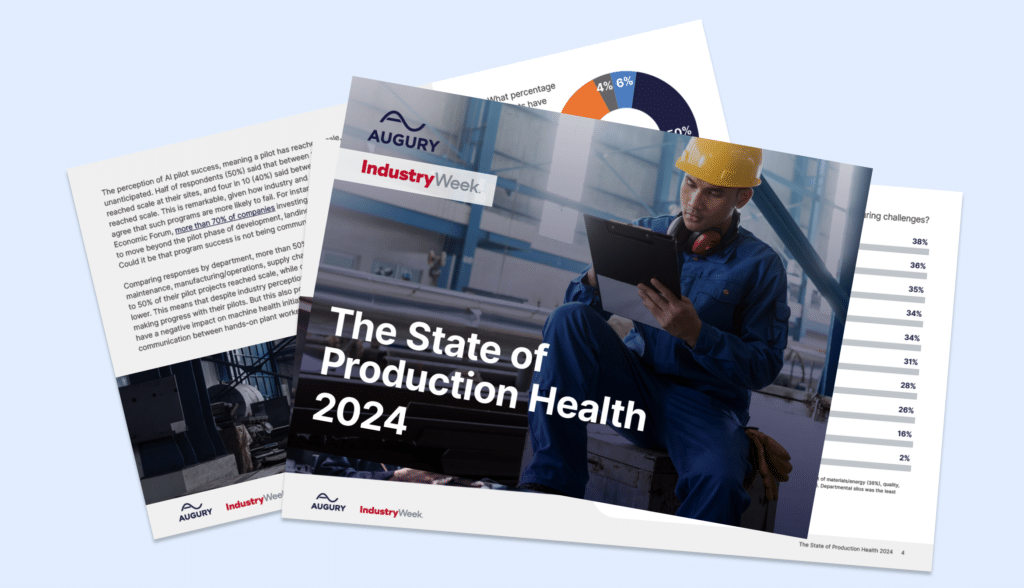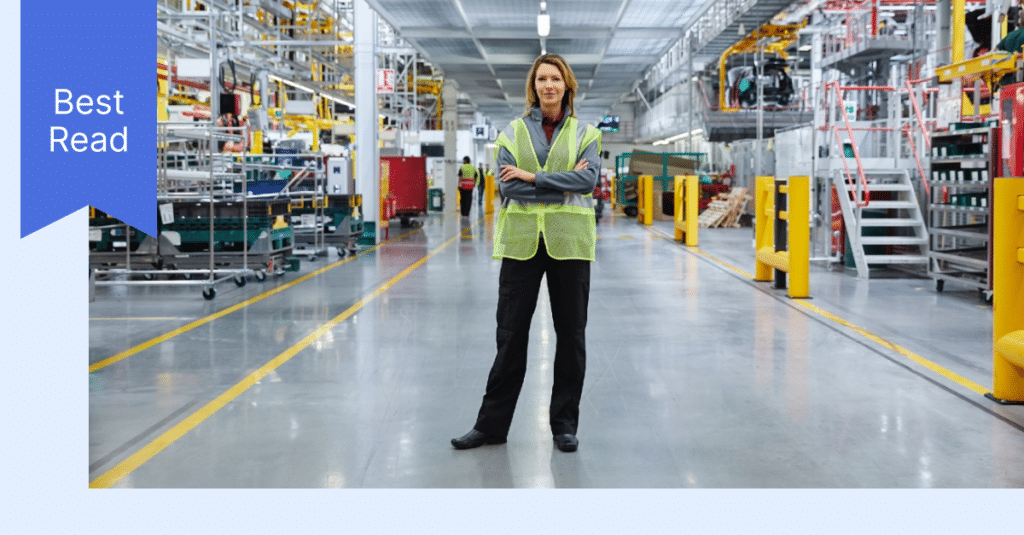
‘The State of Production Health 2024′ report is filled with up-to-the-minute industry insights. However, what most struck Augury CEO Saar Yoskovitz were the many indications of manufacturers’ increased trust in AI to help address their challenges. “AI’s impact on the workforce and user buy-in is improving, enabling manufacturers to look to larger, persistent opportunities such as supply chain issues and capacity.”
Good News Against Manufacturing’s Universal Challenges
“The State of Production Health 2024” builds on the baseline-defining premier report from 2023. Hence, it not only defines the current state of affairs but also charts any ongoing shifts. And on one level, there’s much to celebrate: the trust in AI solutions is growing.
The survey suggests AI-powered tools have helped alleviate workforce stresses – after ‘upskilling the workforce’ was the main reason for leveraging AI in 2023 (25%). Now, it would seem manufacturers are ready to set their sights on AI solving other problems. For example, supply chain issues rose to the top in 2024, up 11% from a fourth-place ranking last year, in terms of being the “primary factor that could limit your ability to meet production targets/business objectives over the next 18 months”.
The report is based on 705 qualified responses from decision-makers working at $100M+ companies with at least five manufacturing sites. These companies cover various industries, including building materials, cement, chemicals, consumer packaged goods, food and beverage, pharmaceuticals, metals and mining, oil and gas, paper and packaging, and wood products.
“I’m lovingly calling the market now ‘Covid junior,’ because in a lot of ways we’re right back to where we were during the pandemic.”
Facing Down a Strained Supply Chain – Again
“With workforce upskilling initiatives returning value, manufacturers are shifting their spend toward supply chain and capacity concerns,” the report states. “With over 90% of the manufacturers agreeing that supply chain disruptions are expected to become more frequent over the next 12 months.”
This fear is easy to explain. As a director of a logistics company in the article ‘It’s All Happening Again.’ The Supply Chain Is Under Strain’ eloquently says: “I’m lovingly calling the market now ‘Covid junior,’ because in a lot of ways we’re right back to where we were during the pandemic.”
Except now, instead of battling a virus, we’re facing a perfect geopolitical storm. And: “If the supply chain disturbances of the pandemic proved anything, it was this: Trouble in any one place tends to ripple out widely,” the article states.
“The consequences of the pandemic were difficult enough to grasp, with great miscalculations over the impacts on demand for factory goods. But everyone understood that pandemics end eventually. The Houthi strikes and the effects on the Suez Canal, on the other hand, involve enormous geopolitical variables that make forecasting difficult. […] There is no clear solution in sight.”
In other words, we need to make every production moment count.
“Nearly all the respondents either strongly agree, agree, or somewhat agree that AI and advanced technologies will help create new jobs in the manufacturing industry (97%), and they are personally optimistic about the future of the manufacturing industry (96%).”
Success – Especially Measurable Success – Builds Trust
So while supply chain worries distract manufacturers, the Production Health report also reflects a certain positivity – driven by an increased trust in AI’s ability to help on various levels.
“Despite acknowledging the industry’s manifold challenges and obstacles to production, optimism for the future is evident. Nearly all the respondents either strongly agree, agree, or somewhat agree that AI and advanced technologies will help create new jobs in the manufacturing industry (97%), and they are personally optimistic about the future of the manufacturing industry (96%).”
And the faith in AI seems to be aligned with how it’s become easier to measure an AI project’s success. As the report states: “The significant growth in respondents reporting the ability to quantify value from AI investments in various areas indicates that manufacturers are getting better at using AI, and thus increasingly realizing a return on investment.”
More Success, Less Hurdles
The increase in speedy ROI perhaps explains the 300% increase in respondents citing no roadblocks when adopting AI tools to solve production challenges. “Six percent of 2023 respondents said there were no roadblocks to AI adoption, whereas in 2024, that figure grew to 19%.”
But perhaps the most heartening is the apparent drop in the number of AI projects ending in “pilot purgatory”. “Half of respondents (50%) said that between 11% to 25% of AI projects reached scale at their sites, and four in 10 (40%) said between 26% to 50% of AI projects reached scale.” These numbers starkly contrast to those of the World Economic Forum, which shows that over 70% of companies investing in Industry 4.0 technologies fail to move beyond the pilot phase of development.
It seems Industry 4.0 is finally coming of age.
“As manufacturers look toward the future – and specifically toward improving production health – those who have yet to embrace IoT connectivity and AI solutions need to do so immediately.”
Onward and Upward
As the report states, “Crucially, optimism in the value of AI is a key uptick and very promising for the future state of manufacturing. AI continues to offer promises to create a much more empowered workforce, unlock efficiencies, create new collaboration methods, and change how manufacturers plan for and measure success across the organization – including machines, processes, upskilling, waste reduction, operations, and more.”
But yes, there’s still much to be done.
“As manufacturers look toward the future – and specifically toward improving production health – those who have yet to embrace IoT connectivity and AI solutions need to do so immediately. While those who have already found success should expand those investments to better visualize and act on the data that connects machines, processes, and operations. This is foundational to the ability to meet production objectives while overcoming what they say are today’s key challenges, such as capacity constraints, supply chain issues, workforce concerns, and equipment reliability and efficiency.”
Let’s get to work.
Read the full report: ‘The State Of Production Health 2024’.





